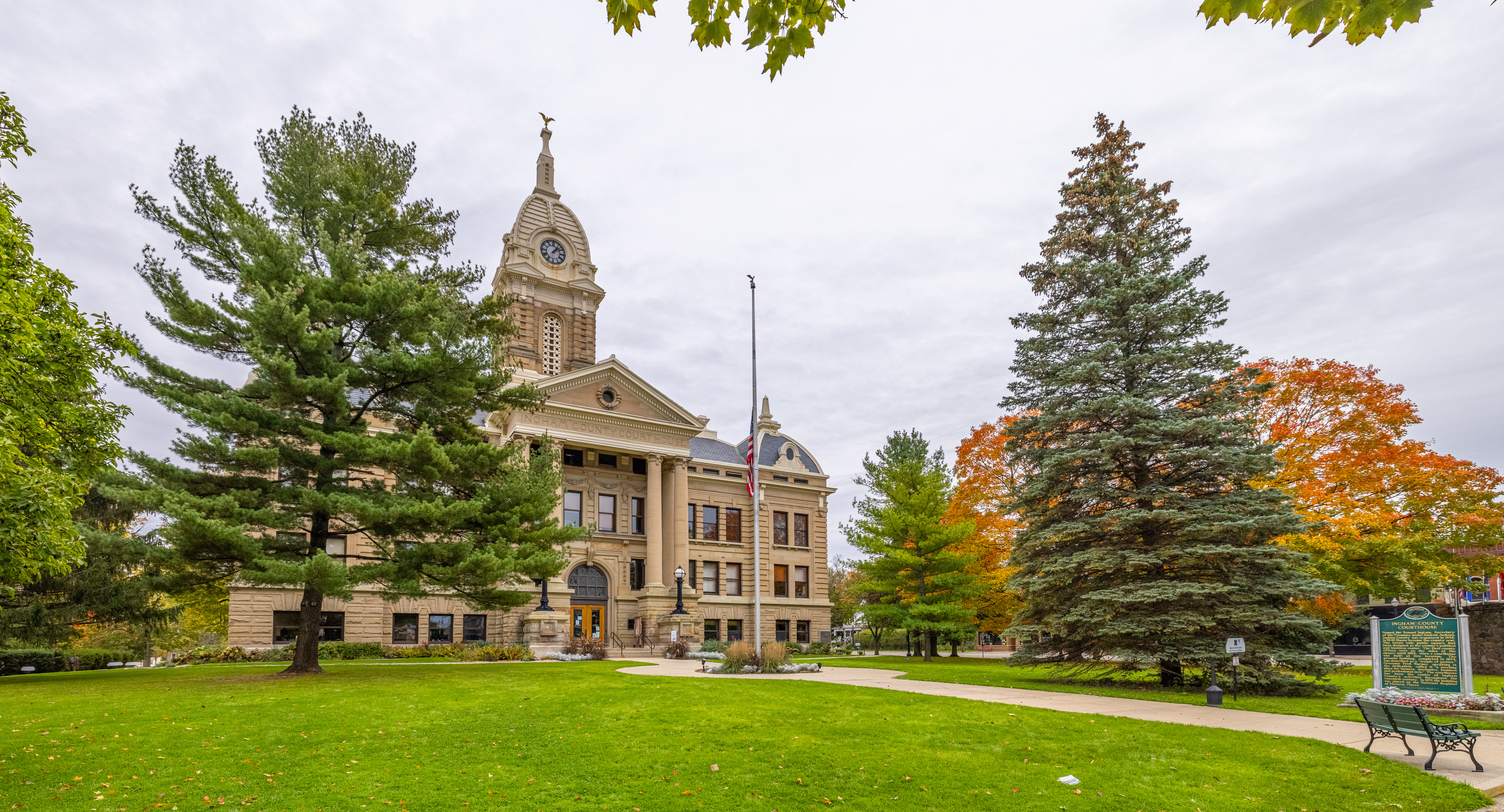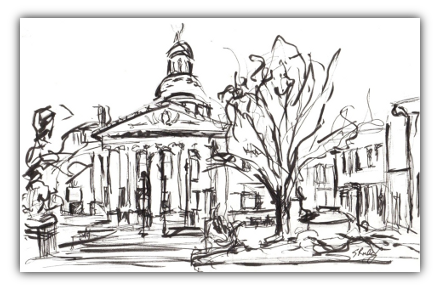In my previous courthouse posts, I discussed artwork's role in supporting the American courthouse as a symbol of the rule of law and creating a long-term cultural connection with the American public. Today, I will discuss another vital role of courthouses as a generator of economic development for the downtowns of larger cities and smaller communities. I should be considered during the courthouse planning process.
Federal, state, and local courthouses have traditionally been located in the very heart of a town or city. This is due to their symbolic significance and the practical aspect of the convenience of access (at least before the advent of freeway rush-hour gridlock). At its most basic and direct level, the courthouse supports the economic development in the downtown by:
- Bringing judicial staff to the downtown
- Bringing attorneys and litigants to the downtown
- Encouraging the development of nearby law offices
- Supporting patronage of daytime restaurants and other retail
- Supporting patronage of daytime parking facilities
Of course, these direct impacts have positive secondary and tertiary ripple effects throughout the downtown economy. This is true from New York City to Chicago to San Francisco, as well as in small communities across the country. But the image of vitality and viability that supports the economic development of the big city or small town center is of equal significance. The continued presence of historic courthouses is significant in small communities whose commercial activity has gradually migrated to the suburbs.
Economic Development Role Example
The historic Virginia courthouse shown in this artist’s sketch is an excellent example of the economic development value of the courthouse – both from its direct contribution to the downtown economy and its role in enhancing a viable image of the downtown.
During the several days of meetings I spent at the courthouse, I had the opportunity to visit other downtown areas. It was apparent that the courthouse was responsible for the presence of the adjacent private law offices and many of the patrons in the nearby restaurants. It also contributes to the image of this part of downtown, where the shops remain occupied and active as I moved farther away from the courthouse. Unfortunately, a more significant number of commercial vacancies appeared.
Still, maintaining the judicial functionality of an older courthouse can often take time and effort. In a future Fentress paper, we will explore different ways to extend the useful life of an older courthouse in its existing location, thereby saving a valuable urban resource and contributing to the downtown economy.



















